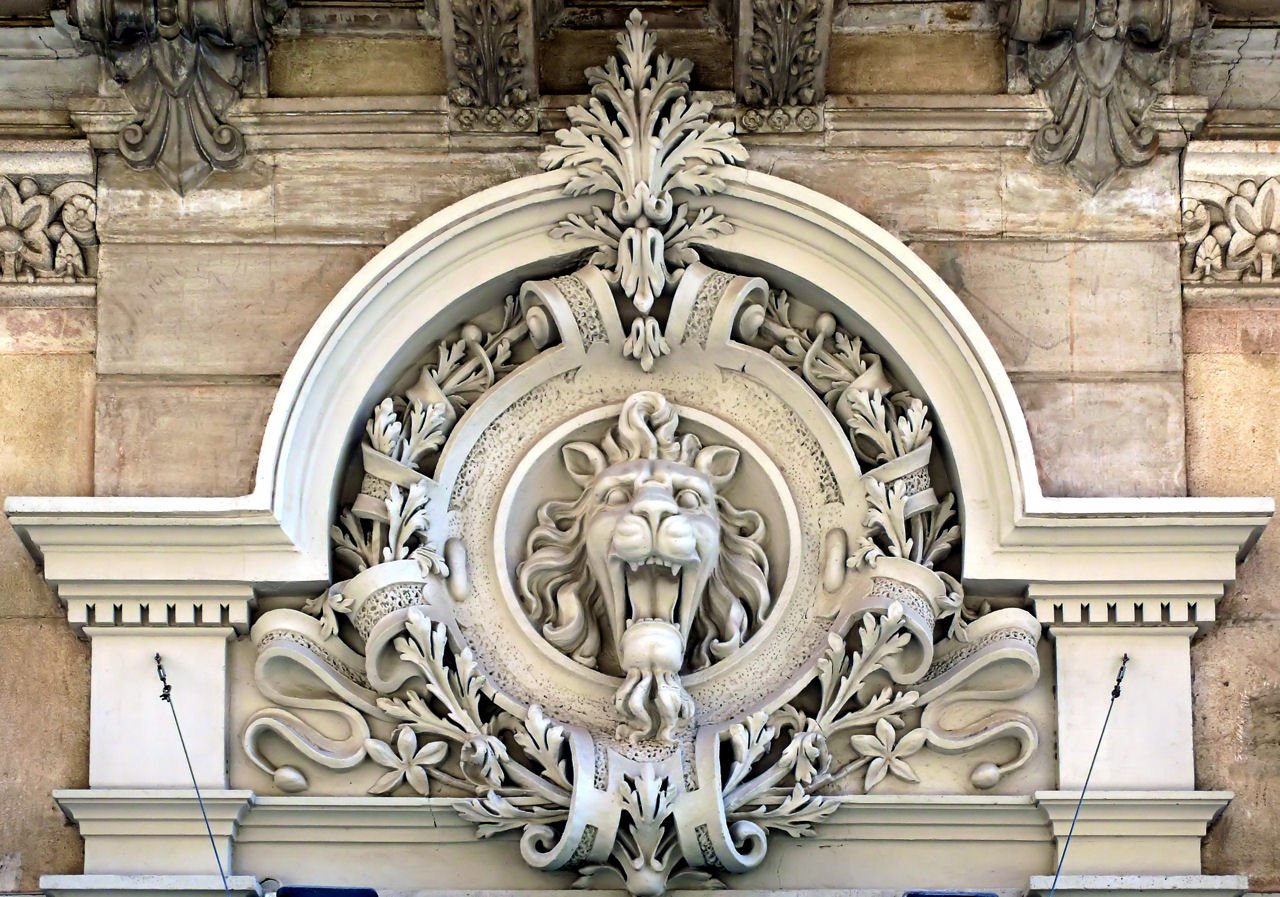#1676. Neoclassical Facade with Lion Medallion: The Art of Architectural Stuccowork
The image showcases an exquisite example of neoclassical architecture with baroque elements on the facade of a historical building. The central element of the composition is a skillfully crafted decorative medallion featuring a lion's head, surrounded by elegant stucco work. This architectural element is placed within an arched structure that emphasizes its significance in the overall facade composition.
The upper part of the composition is adorned with acanthus leaves – a classical motif that has been used since ancient Greek architecture. Lush ornamentation with floral motifs, volutes, and decorative elements frames the central lion figure, giving the entire composition a sense of grandeur and monumentality. Such detailed craftsmanship testifies to the high skill of sculptors and professional facade design characteristic of representative buildings from the late 18th to early 19th century.
The light color palette allows for highlighting all the nuances of the relief and creates a depth effect. The stone masonry of the facade serves as a noble background for the decorative elements, emphasizing their elegance and expressiveness. It's interesting to note the combination of symmetry in the overall composition with the dynamic plasticity of individual elements, creating a harmonious yet expressive appearance.
Similar facade decoration techniques can be adapted for a modern private home using more accessible materials – for example, decorative plaster or polyurethane elements imitating stucco work. A smaller-scale central medallion with a heraldic or floral motif can become an expressive accent on a private home facade, giving it individuality and a reference to classical architectural traditions.
